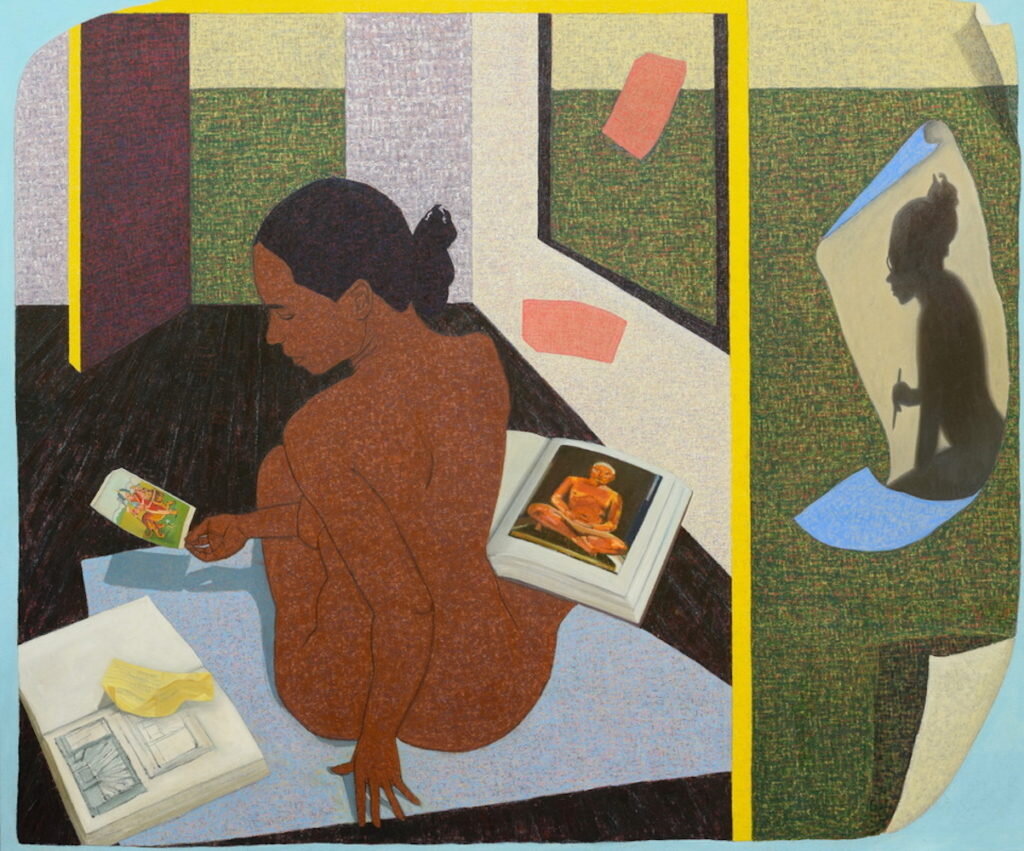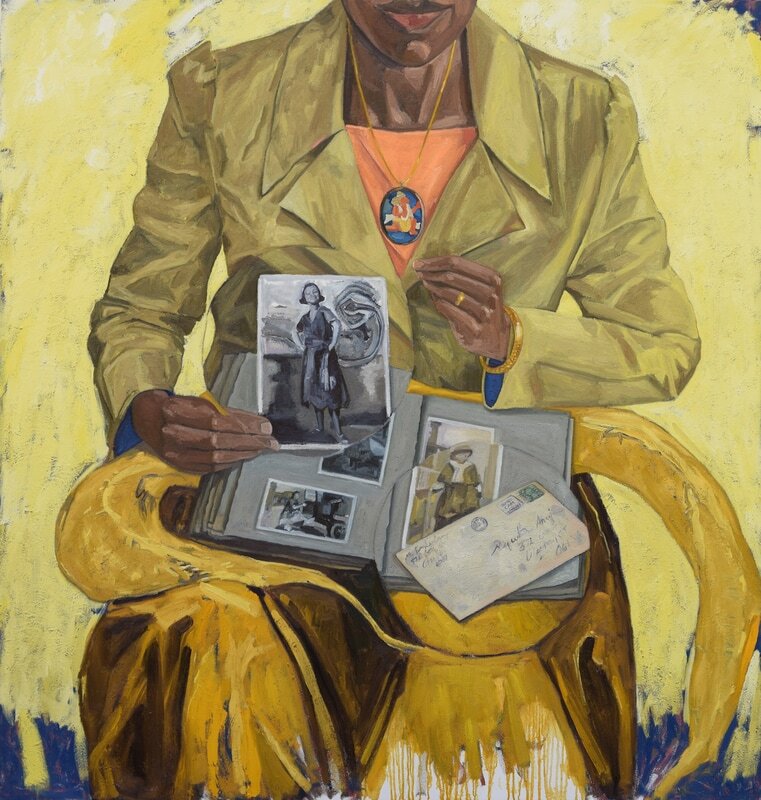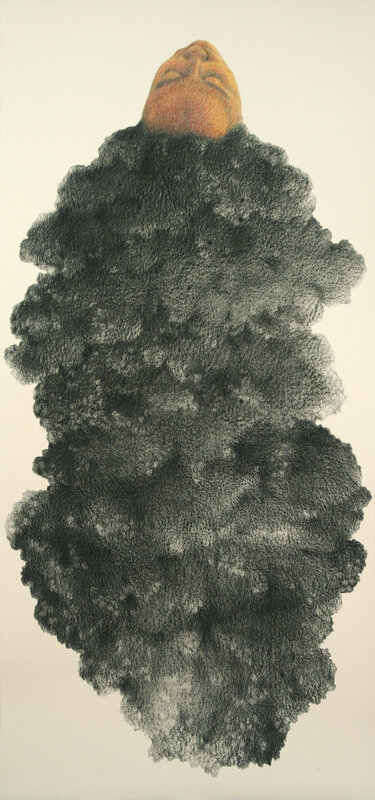Artist Feature: Mequitta Ahuja
"...female archetype—empowered, skillful and abundantly imaginative."
Self-portraiture is one of the bravest forms of art making. As we do, these self-reflections come in many, many forms. Artists depict themselves through the simplest actions, such as the lighting of matches, to the most extravagant of circumstances the imagination can drum up. Self-portrait artist Mequitta Ahuja describes her earlier work as “automythography…a combination of personal narrative with cultural and personal mythology.” In her most recent bodies of work, this narrative reflects how she sees herself as a maker. She describes, “My body of work documents my development as a maker and as a thinker. I want my viewers to see what I see and to see how I visually problem-solve, which is a way of thinking. I want the viewer to see me in my process of thinking and painting, painting and thinking.”
As the viewer, my experience of Ahuja’s portraits successfully accomplishes this witnessing of her process; the action in her portraits invite us into her space, where we get a glimpse of what her creative process looks and may even sound like. There’s a very powerful witnessing happening. Like an infinity mirror, we get to witness Ahuja as she witnesses herself witnessing herself as an artist.
Ahuja explains that her central intention is to “explore what it is to be a person of color in America, while at the same time moving the genre of self-portraiture away from identity and toward a discourse on picture-making.” She continues to explain, “This is a key point for me, perhaps the key point. The genre of self-portraiture, especially self-portraits by women, minorities and people of color, has long been understood narrowly as being about identity. But what does it mean to depict the artist in an artwork? For me, that is not about personality or biography; it is about art-making. I present the artist creating and controlling a discourse on representation, and yes, she is a woman of color.” Filling in the gaps of black history through exemplifying her work in the now, she “weaves negatives to form positives.” Ahuja is in full control; she is not only the artist of her work, but the subject, the viewer, and sometimes even the seller.
“I depict the woman in my work, myself, my subject, as self-sufficient and creatively expansive. I see her as myself but also as an emblem, a female archetype—empowered, skillful and abundantly imaginative.”
The gallery below highlights Mequitta Ahuja’s more recent paintings, however, it does also include some older drawings from her Automythography series.
+ + +
Mequitta Ahuja (1976), is a Baltimore-based contemporary feminist painter whose parents hail from Cincinnati and New Delhi. She received her BA in 1998 from Hampshire College in Amherst, MA and her MFA in 2003 from the University of Illinois, Chicago. Ahuja’s works have been widely exhibited, including venues such as the Brooklyn Museum, Studio Museum in Harlem, Saatchi Gallery, Minneapolis Institute of Art, Crystal Bridges, Baltimore Museum of Art and Grand Rapids Art Museum.























